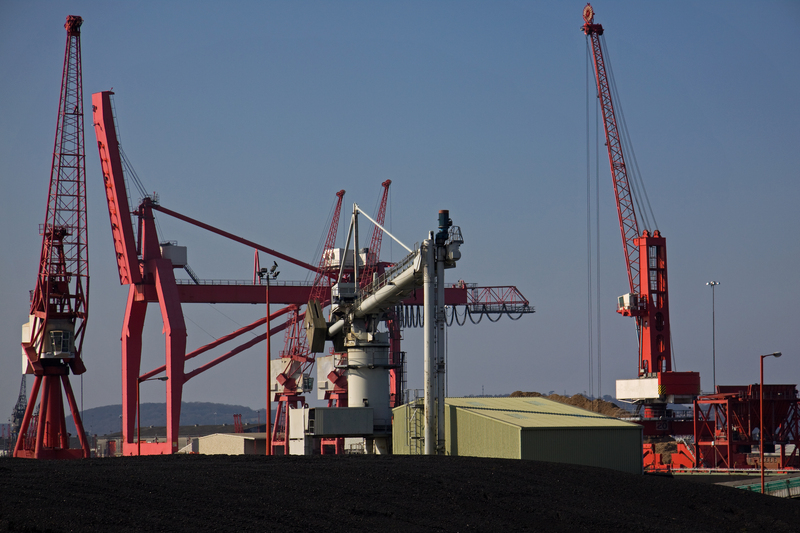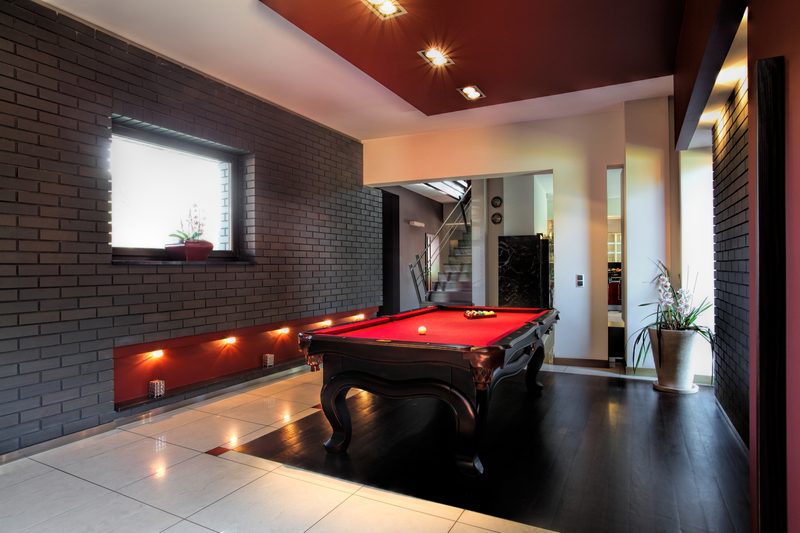How to Safely Relocate Your Piano: Leave DIY Behind
Posted on 10/06/2025
How to Safely Relocate Your Piano: Leave DIY Behind
Moving a piano is no ordinary task. Whether your instrument is a cherished family heirloom or a professional essential, ensuring its safety during a move is paramount. This comprehensive guide will reveal why attempting a DIY piano move is fraught with risks, and explain expert-recommended methods for safely relocating your piano. Read on to discover step-by-step preparation tips, common moving pitfalls, and the peace of mind that comes from hiring skilled piano movers.
Why You Should Avoid DIY Piano Moving
Many homeowners tempted to save money may consider moving a piano themselves. However, pianos are exceptionally heavy, delicate, and complex. Here's why you should think twice before attempting a DIY piano move:
- Weight and Size: Upright pianos can weigh between 300-800 pounds; grand pianos may exceed 1,200 pounds.
- Irregular Shape: Their shape and weight distribution make them cumbersome and unstable to shift.
- Delicate Internal Components: A piano contains up to 10,000 moving parts. Any bump or knock can cause lasting damage.
- Risk of Injury: Lifting heavy pianos without proper equipment or training can result in serious injuries.
- Property Damage: Walls, floors, staircases, and doors can all be damaged by awkwardly maneuvered pianos.
DIY piano moving simply isn't worth the risk. In contrast, working with professional piano movers ensures your valuable instrument is protected every step of the way.

The Benefits of Hiring a Professional Piano Moving Company
Entrusting your piano relocation to experts offers peace of mind and a host of advantages. Below are some compelling reasons to let professionals handle your piano move:
- Specialized Equipment: Professionals use piano boards, dollies, padded covers, and locking straps for secure transport.
- Experienced Personnel: Skilled movers understand how to disassemble, pad, lift, and reassemble pianos safely.
- Insurance Coverage: Most reputable piano movers are insured, adding another layer of protection.
- Efficient Planning: Movers assess access points, plan for tricky turns, and know how to navigate stairs and tight spaces.
- Save Time & Stress: Letting the pros handle your piano move eliminates physical labor and worry from your to-do list.
Ultimately, hiring piano moving experts is the safest, smartest way to protect your investment and guarantee a smooth relocation process.
Piano Types and Their Unique Moving Needs
Not all pianos are created equal. Understanding your piano's structure helps inform the safest way to move it. Typical types include:
Upright Pianos
- Vertical orientation makes these a popular choice for homes.
- Heavier than they look; always to be moved by several people with equipment.
- Care needed to protect pedals, keys, and finish from scratches and bumps.
Grand & Baby Grand Pianos
- Large soundboard and protruding lid make these pianos tricky to maneuver.
- Legs usually require removal before moving.
- Expensive and delicate parts demand expert handling.
Digital Pianos
- Lighter than acoustic versions but still need cautious treatment to avoid jarring circuits or damaging keys.
- Original packaging is preferable for transportation if available.
Piano Moving Preparation: What to Know Before the Move
Piano moving success depends largely on thorough planning and careful preparation. The following checklist ensures you're ready before the professionals arrive:
- Book in Advance: Schedule your move as early as possible to secure your preferred time.
- Inform the Movers: Offer details about your piano (type, brand, age, size) and any access challenges (stairs, elevators, tight hallways).
- Clean the Piano: Wipe down surfaces to avoid grit scratching the finish during transportation.
- Prepare Pathways: Clear furniture, rugs, or other obstacles from the route out of your home and into your new location.
- Protect Floors & Walls: Use corner guards and floor runners if possible.
- Secure Pets & Children: Keep them safely away on moving day to avoid accidents.
Well-prepared homes and pianos help movers work efficiently and safely--contributing to a successful relocation.
How Professional Piano Movers Relocate Your Piano
Curious about what expert piano movers actually do? Here's a step-by-step look at the meticulous process used by experienced teams:
- Assessment and Planning: Movers visit your property or request photos/measurements to prepare the safest strategy for extraction and relocation.
- Disassembly (If Required): Grand pianos may require detachment of legs, pedals, and lyre; uprights may need minor parts removed for safe passage.
- Packing and Protection: They cover the piano in thick moving blankets and secure them with tape or straps.
- Lifting and Placement: Using properly rated dollies and ramps, teams lift and position your piano on a specialized moving board.
- Secure Loading: The piano is carefully loaded onto the truck, locked in place with straps to prevent shifting.
- Transportation: Vehicles with air ride suspension minimize vibrations and bumps.
- Unloading and Reassembly: On arrival, the process is reversed with full caution, and any removed components are reattached.
- Final Check: Movers inspect your piano for damage so you can address issues immediately under their insurance policy.
Throughout, skilled piano movers use teamwork, communication, and patience to keep your instrument--and property--free from harm.
Common Risks of DIY Piano Moving
The allure of a do-it-yourself approach quickly fades once you understand the true risks, including:
- Personal Injury: Back strains, crushed fingers, and falls are real dangers when moving several hundred pounds without training.
- Piano Damage: Broken legs, detuned strings, snapped action components, and scratched wood finishes are just a few hazards.
- Property Destruction: Improperly moved pianos tear carpet, mark hardwood, dent walls, and gouge door frames. Repairs can be costly.
- Lack of Insurance: Homeowners' policies rarely cover damage caused by untrained movers.
Save yourself the heartbreak--the risks far outweigh any savings from a DIY piano move!
What to Look For in a Professional Piano Moving Service
Choosing the right moving company is crucial to the safety of your piano. Here's how to select a reputable, experienced service provider:
- Specialization: Choose a company that focuses on piano or specialty item moving--not general household movers.
- Experience: Ask how many pianos they move each year and request references or reviews.
- Insurance: Verify that the company is fully insured for accidental damage to both your property and the piano.
- Equipment: Confirm they use dedicated piano moving equipment and climate-controlled transport vehicles.
- Upfront Quotes: Reliable companies offer transparent quotes based on your piano type and moving conditions.
Don't be afraid to ask questions and research thoroughly--your piano deserves the best care available.
Post-Move Piano Care: What Comes Next?
After your piano has arrived at its new home, a few additional steps will help keep it performing beautifully:
- Let It Settle: Allow the piano to acclimate to its new environment for a few days. Moving can affect tuning and action.
- Tuning: Schedule a tuning by a professional technician, ideally 1-2 weeks after the move.
- Inspection: Check the finish, pedals, legs, and keys for any signs of shifting or damage.
- Reposition Carefully: Place your piano away from direct sunlight, heat sources, and humidity extremes to prolong its life.
Regular maintenance following a move supports both the rich sound and longevity of your instrument.
Piano Relocation FAQs
Can I move my piano if I have the right equipment?
Even proper equipment cannot overcome the challenges of inexperience and unpredictable accidents. Without expert technique, significant risks to your piano and yourself still exist.
How much does a professional piano move cost?
Pricing varies based on piano type, distances, stairs/elevators, and any disassembly required. Expect most moves to range from $200 for an upright locally, to $1,000+ for grand pianos or long-distance relocations.
Is insurance included with piano moving?
Reputable piano movers offer insurance as part of their service, covering both your instrument and your home. Always confirm this before booking.
How long does it take to move a piano?
Most local piano moves can be completed within a few hours. Long-distance or complex relocations (with stairs or disassembly) may take a day or more.

Leave DIY Behind: Your Piano Relocation Checklist
- Research professional piano movers early
- Gather essential piano details: Make, model, dimensions, weight, and age
- Clear pathways and protect surroundings
- Communicate access challenges upfront: Stairs, elevators, tight hallways
- Secure pets and children
- Book tuning after your move
Following this checklist turns a stressful piano relocation into a seamless, damage-free experience--and gives you total peace of mind.
Conclusion: Trust the Experts for a Risk-Free Piano Move
If you love your piano, don't risk its future with a DIY approach. From physical safety to protecting your cherished investment, the advantages of hiring professional piano movers are undeniable. Trained specialists use expert technique, proper equipment, and thoughtful planning to ensure your piano arrives safe, sound, and ready to play in its new home.
Leave DIY behind--make your next piano relocation safe and stress-free by trusting the experts.
Ready to move your piano the right way? Contact a reputable local piano moving company today, and experience the difference that true expertise can make.



